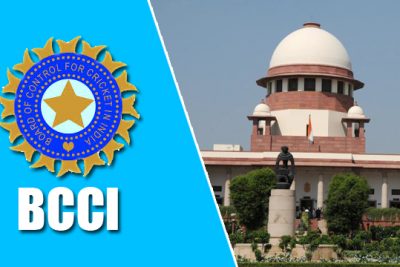This year started with a big blow to the BCCI when the Supreme Court removed Anurag Thakur from the post of the President of the cricket body as well as Ajay Shirke from the post of the Secretary for not complying with the court’s order. All this began a year back with Justice RM Lodha recommendations on the restructuring of the BCCI so as to end the influence of politics on the game of cricket. This cosy club structure that they wanted to remain in place is booted out but now the question arises what next? A bunch of people who tried to take control of an organisation and run it as their own personal fiefdom was no longer acceptable and someone more competent should take their place, that’s the law of nature. But, again the question comes that are these steps a panacea for the ills or just a bad pill? Well before the import of the recommendations - which is significant to the dislike of the Board members - could sink in, many who thought that the BCCI had grown too big and powerful for its `own good’ were rubbing their hands in undisguised glee. First, let’s talk about some of the recommendations pitched in by the committee to reform the system which includes:

· Lodha panel proposes one state, one vote. Also no proxy voting of individuals.
· No BCCI office-bearer can have more than two consecutive terms

· No BCCI office-bearer can be Minister or government servant
· A steering committee headed by former Home Secretary G K Pillai with MohinderAmarnath, Diana Eduljee and Anil Kumble
· Separate governing bodies for the BCCI and the Indian Premier League (IPL), with certain level of autonomy provided to the IPL body
· Relegation of Railways, Services and Universities as Associate members. They also lose voting rights.
· In no case, President will hold post for more than 2 years
· BCCI to come under RTI Act
All these recommendations have come handy in dealing with certain issues but this has set a proverbial cat among the pigeons. For instance, the committee calls for players to be represented on the BCCI Working Committee and that the players association should be funded by the BCCI. This would be a very unwise move. Granting the cricketers this sort of power could backfire as the West Indies cricket board learnt to its eternal loss when their players controversially withdrew from the tour of India recently. A similar strike by Indian players could seriously wreck the very fabric of Indian cricket. Coming down on over-representation by some states, Maharashtra (4 votes) Gujarat (3 votes), has led to backfiring from state associations as it could be grossly unfair if Mumbai, a city that has done more for Indian cricket than all the other units put together, is affected by less finances or denial of vote. Some recommendations also seem at odds. Take the perceived conflict of interest held against N Srinivasan owing to his being the owner of Chennai Super Kings, a franchise, and also a BCCI office-bearer. His dual interest was considered a major conflict. But, in the recommendation for the body of the Governing Council to be comprised of two representatives from IPL franchises brings that conflict of interest into the picture again.
To conclude, BCCI has been dogged by many issues and reforms should be put in place before it is hailed as a role model for other sporting bodies and the recommendations and actions taken by the committee has set the ball rolling. Therefore, this restructuring pill is not bad or good but a necessity and that too a bitter one.
-----------------
About the Author:
Harshit Kalra,
PGP2016-18 Batch,
IIM Raipur




